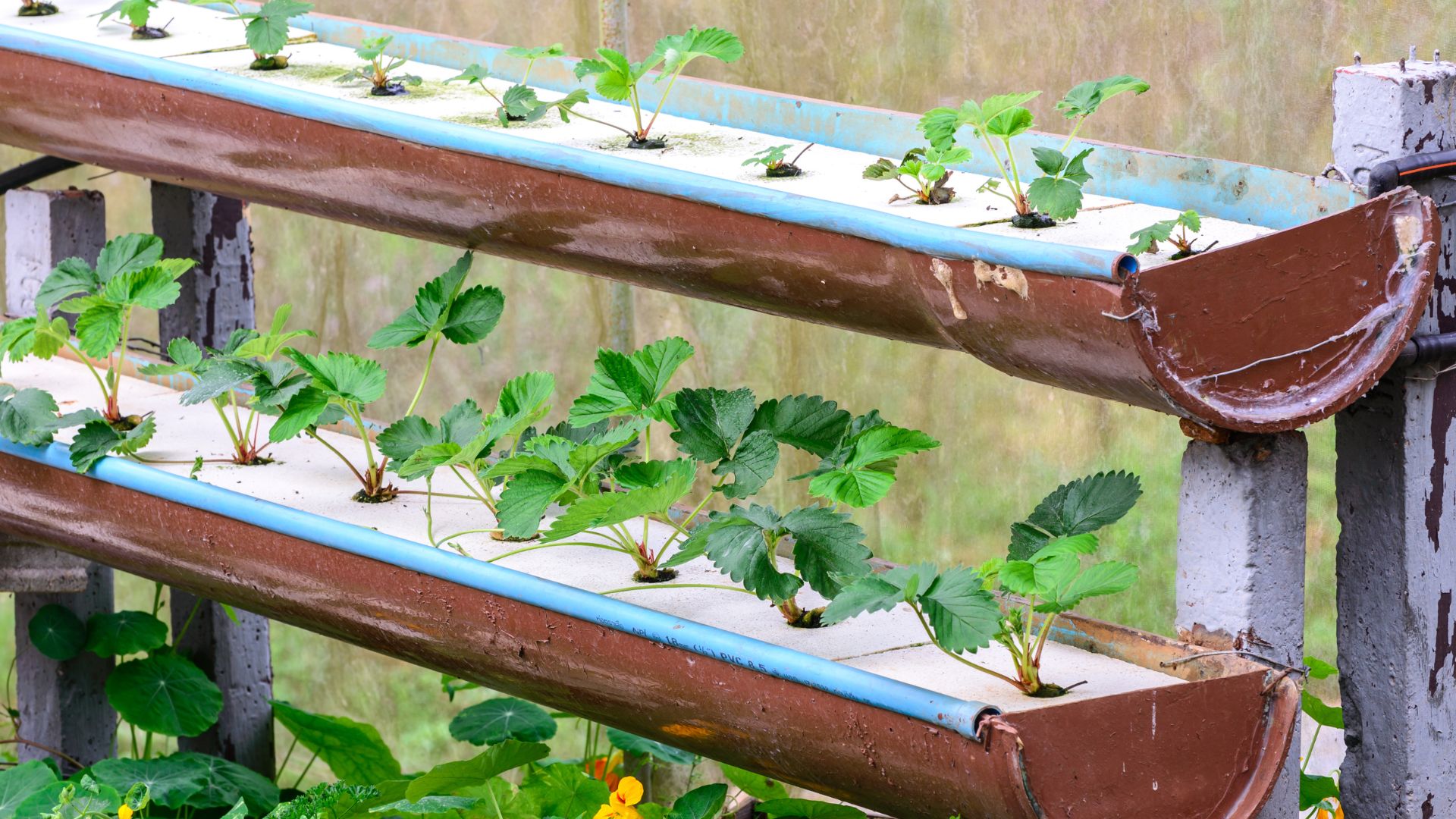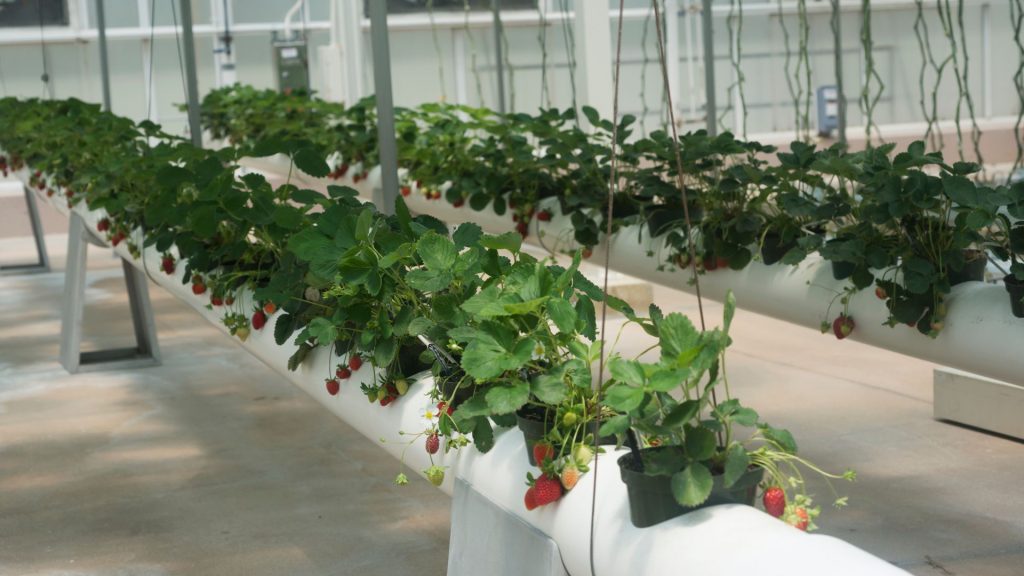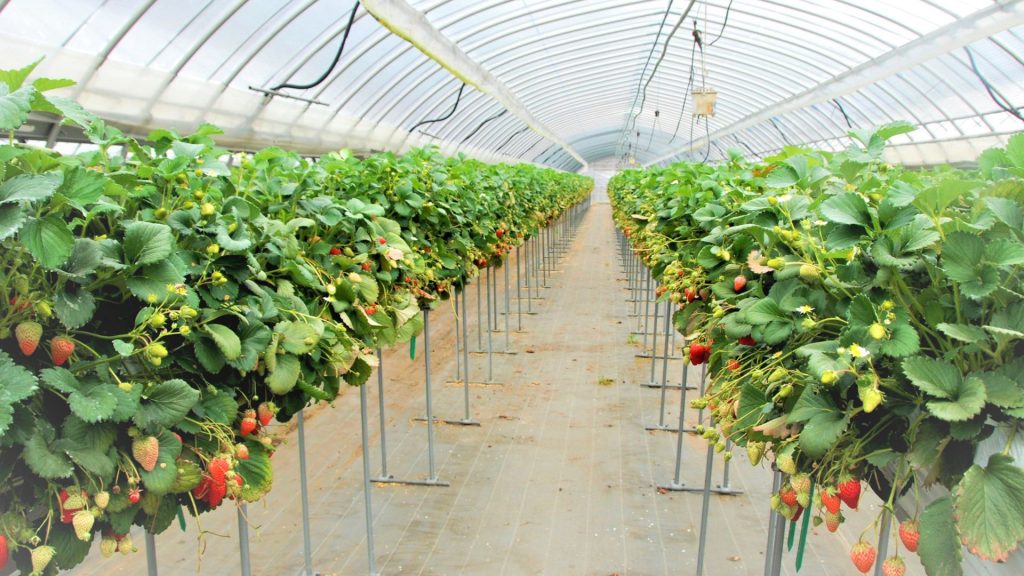How and Why to cultivate Strawberries in a Hydroponic system
Strawberries are among the most favored and tasty fruits globally. They are rich in antioxidants, vitamin C, fiber, and other nutrients that are beneficial for health. However, cultivating strawberries in the ground can pose challenges due to limited space, low soil quality, or harsh weather conditions. That’s why many people choose to grow strawberries hydroponically, a soilless method that uses water and nutrients to support plant growth.
In this article, we will explain what hydroponic strawberry cultivation is, focus on the advantages of this method of cultivating them soilless, how to set up a hydroponic system for strawberries, how to choose and plant the best varieties of strawberries for hydroponics, how to care for and maintain your hydroponic strawberries, how to harvest and store your hydroponic strawberries, and some tips and tricks to make your hydroponic strawberry garden successful.
What is Hydroponic Strawberry Cultivation?
Hydroponic strawberry cultivation is the process of growing strawberries without soil. Instead of using soil as a medium for plant roots to absorb water and nutrients, hydroponic systems use water infused with essential nutrients that are delivered directly to the roots through tubes or channels.
Hydroponic systems can be classified into two main types: nutrient film technique (NFT) and deep water culture (DWC). NFT systems use a thin film of nutrient solution that flows along the surface of the growing medium (such as rockwool or perlite) where the roots are suspended. DWC systems use a reservoir of nutrient solution that covers the entire growing medium where the roots are immersed.
Both types of systems have their advantages and disadvantages depending on the space available, budget, preference, and desired outcome.
Why Choose Hydroponic Strawberry Cultivation?
There are many reasons why you might want to try growing strawberries in hydroponics. Here are some of the benefits of this method compared to soil-based cultivation:
Higher yield and quality: Hydroponic strawberries can produce more fruits per plant due to consistent access to optimal water and nutrient levels. They typically produce bigger and sweeter fruits compared to strawberries grown in soil.
Faster growth: Hydroponic strawberries can grow faster than soil-grown strawberries because they do not have to compete with weeds or pests for resources. They also do not have to wait for soil conditions to improve before planting.
Less maintenance: Hydroponic strawberries require less maintenance than soil-grown strawberries because they do not need tilling, weeding, fertilizing, pruning, or pest control. They also do not need irrigation or drainage systems.
More control: Hydroponic strawberries allow you to control various factors that affect plant growth, such as water quality, nutrient concentration, pH level, temperature, light intensity, oxygen level, etc. You can also adjust these factors according to your needs and preferences.
More variety in the cultivars and propagation material: Hydroponic strawberries offer more variety than soil-grown strawberries because you can choose from different types of plants, such as runners (which produce new plants from their stems), suckers (which grow from their leaves), cuttings (which grow from their stems), etc. You can also experiment with different varieties of plants, such as hybrid (which combine traits from two different species), open-pollinated (which produce seeds from their flowers), or genetically modified (which have altered traits).
How to Set Up a Hydroponic System for Strawberries?
To set up a hydroponic system for strawberries, you will need some basic equipment such as:
Container: You can use any container with enough space for your plants, such as pots, trays, baskets, boxes, etc.
Reservoir: You can use any container with enough capacity for your nutrient solution, such as buckets, barrels, tanks, etc.
Pump: You can use any pump with enough power for your system, such as submersible pumps, air pumps, etc.
Filter: You can use any filter with enough capacity for your nutrient solution, such as activated carbon filters, ceramic filters, etc.
Timer: You can use any timer with enough accuracy for your system, such as digital timers, mechanical timers, etc.
pH meter: For your system, choose a pH meter that is sensitive enough, such as a digital pH meter or a colorimetric pH meter.
Thermometer: You can use any thermometer with enough accuracy for your system, such as digital thermometers, infrared thermometers, etc.
Hygrometer: You can use any hygrometer that has enough accuracy for you.
How to Choose and Plant the Best Varieties of Strawberries for Hydroponics?
Strawberries come in many varieties, each with different characteristics such as size, shape, color, flavor, disease resistance, etc. Some of the most popular and suitable varieties for hydroponics are:
Fragaria vesca: This is the most common and widely cultivated variety of strawberries. It has small to medium-sized fruits that are red, yellow, or green. This plant is easy to grow and yields abundantly. Also, it is quite resilient against most diseases and pests.
Fragaria virginiana: This is the wild strawberry native to North America. It has large fruits that are red or yellow. It has a strong flavor and aroma that is often used for making jams, pies, or wines. It is also resistant to most diseases and pests.
Fragaria x ananassa: This is the hybrid strawberry that is also known as the ananas or pineapple strawberry. It has medium-sized fruits that are red or yellow with green stripes. It has a sweet and juicy flavor that is often used for eating fresh or making desserts. It is also resistant to most diseases and pests.
Fragaria chiloensis: This is the Chilean strawberry that is native to South America. It has small fruits that are red or yellow with black seeds. It has a mild flavor and aroma that is often used for making juices, smoothies, or salads. It’s strong against the majority of diseases and pests, too.
To choose the best variety of strawberries for your hydroponic system, you should consider factors such as:
- Your space: You should choose a variety that fits well in your container and does not take up too much room for growth.
- Your climate: You should choose a variety that can tolerate the temperature, humidity, light intensity, and rainfall conditions of your location.
- Your preference: You should choose a variety that suits your tastes and personal preferences.
- To plant the best varieties of strawberries for your hydroponic system, you should follow these steps:
- Prepare your container: You should fill your container with water up to the desired level for your system (usually around 10 cm or 4 inches). You can add nutrients like compost or seaweed extract to give your plants the nutrients they need to grow.
- Prepare your growing medium: You should fill your container with rockwool or perlite up to the desired level for your system (usually around 5 cm or 2 inches). These materials provide support and drainage for plant roots.
- Prepare your plants: You should remove any leaves or stems from the plants except for one or two leaves per plant. These leaves will be used to guide the plants in the growing medium.
- Transplant your plantlets: You should gently place each plant in a small hole in the growing medium using a pencil or a toothpick as a stake. Make sure the top of the plant sits slightly above the growing medium’s surface.
- Water your plants: You should water your plants thoroughly until water drains out of the bottom of the container. You should also check and adjust the water level regularly according to your system’s needs.
How to Care for and Maintain Your Hydroponic Strawberries?
To care for and maintain your hydroponic strawberries, you should follow these tips:
- Monitor your system: You should regularly monitor various parameters such as water quality, nutrient concentration, pH level, temperature, light intensity, oxygen level, etc., using tools such as pH meter, thermometer, hygrometer, etc. You should also observe the health and growth of your plants and look for any signs of stress or disease, such as wilting, yellowing, browning, etc.
- Adjust your system: You should adjust various factors according to your needs and preferences using tools such as a timer, pump, filter, etc. You should also change your nutrient solution every two weeks or more often if needed.
- Prune your plants: You should prune your plants occasionally to remove any dead, damaged, or diseased leaves or stems. This will help improve air circulation, light penetration, and nutrient uptake for your plants.
- Harvest your fruits: You can harvest your fruits when they reach their desired size, color, and flavor. You can use scissors, a knife, or a pair of tweezers to cut off the fruits from the stems gently. You can also use a fan or a blower to dry off any excess moisture on the fruits.
- How to Harvest and Store Your Hydroponic Strawberries?
- To harvest and store your hydroponic strawberries, you can follow these steps:
- Harvesting strawberries: You can harvest your strawberries when they reach their desired size, color, and flavor. You can use scissors, a knife, or a pair of tweezers to cut off the fruits from the stems gently. You can also use a fan or a blower to dry off any excess moisture on the fruits.
- Best conditions for storing strawberries: You can store your strawberries in a cool, dry, and dark place, such as a refrigerator, a freezer, or a pantry. You should avoid exposing them to direct sunlight, heat, or humidity as these can cause them to spoil faster. You should also wash and sort your strawberries before storing them to remove any dirt or pests.
Conclusion
Hydroponic strawberry cultivation is an exciting and rewarding hobby that allows you to grow fresh and delicious strawberries without soil. By following this guide, you will be able to set up your own hydroponic strawberry garden in no time.
Further reading: https://www.agriculturelandusa.com/












































































